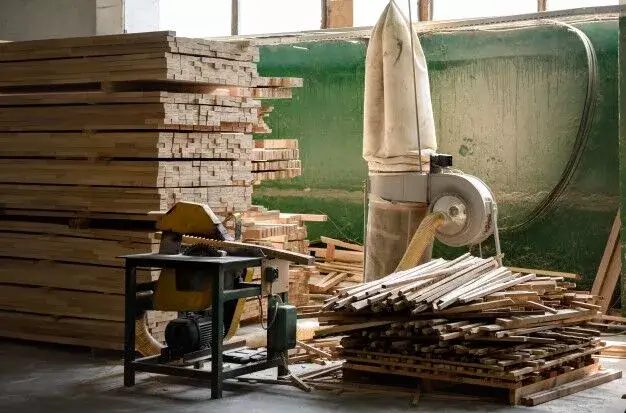Pros and Cons of Wood Pallets
Wood pallets have been the backbone of global logistics, serving as indispensable tools in the movement of goods across diverse industries. Under the heading “Navigating the Trade-offs: Exploring the Pros and Cons of Wood Pallets,” this comprehensive examination delves into the multifaceted aspects that define the advantages and disadvantages of utilizing wood pallets in supply chain operations.
Also Read: Benefits and Disadvantages of Wooden Pallets
Pros of Wood Pallets:
1. Cost-Effective Solution: Wood pallets stand out as a cost-effective choice for businesses aiming to optimize their supply chain expenses. The availability of raw materials and the simplicity of manufacturing contribute to the affordability of wood pallets, making them a budget-friendly option for companies seeking efficient material handling solutions.
2. Versatility and Customization: Wood pallets offer a high degree of versatility, accommodating a wide range of products across various industries. Their design allows for easy customization to meet specific size and weight requirements, catering to the diverse needs of different sectors within the supply chain.
3. Widely Available and Easily Repairable: The ubiquity of wood pallets in the market ensures a readily available supply, facilitating seamless integration into supply chain networks. Additionally, the repairability of wood pallets is a significant advantage, as damaged units can be swiftly and economically repaired, extending their lifespan and reducing replacement costs.
4. Sustainable and Recyclable: Wood pallets contribute to sustainability efforts, as they are made from a renewable resource—wood. Manufacturers often use recycled or responsibly sourced wood in pallet production. Furthermore, at the end of their lifecycle, wood pallets are recyclable and can be repurposed for various applications, minimizing environmental impact.
5. Excellent Friction and Load Stability: Wood pallets exhibit commendable friction and load stability characteristics. The natural texture of wood provides grip, preventing slippage during transportation. This feature enhances the stability of loads, reducing the risk of damage to goods in transit.
Cons of Wood Pallets:
1. Susceptible to Moisture and Rot: One of the primary drawbacks of wood pallets is their susceptibility to moisture. Exposure to damp conditions can lead to swelling, warping, and rot, compromising the structural integrity of the pallet. This limitation necessitates careful handling and storage practices to mitigate the impact of environmental elements.
2. Weight Variability and Transportation Costs: Wood pallets exhibit variability in weight due to differences in moisture content and wood density. While this may seem minor, it can accumulate to impact transportation costs significantly. The inconsistency in weight may lead to inefficiencies in freight calculations and reduced load capacity in transportation vehicles.
3. Splintering and Sharp Edges: The wear and tear of wood pallets over time can result in splintering and the formation of sharp edges. This poses safety concerns for workers handling pallets and can potentially damage packaged goods. Regular inspection and maintenance are essential to address these issues and prevent workplace injuries.
4. Pallet Lifecycle and Disposal Challenges: Wood pallets, despite being recyclable, face challenges in their disposal and end-of-life management. Damaged or unserviceable pallets can accumulate, creating a need for effective waste management strategies. Disposal methods, such as incineration or landfilling, may not align with sustainable practices.
5. Risk of Pest Infestation: Wood pallets are susceptible to pest infestation, especially if stored in environments conducive to the breeding of insects. This risk can lead to the contamination of goods during transportation or storage. Implementing preventive measures, such as fumigation, becomes crucial to mitigate this potential issue.
In conclusion, the decision to employ wood pallets in supply chain operations involves a careful consideration of the trade-offs presented by their inherent pros and cons. While the cost-effectiveness, versatility, and sustainability of wood pallets make them a popular choice, the challenges related to moisture susceptibility, weight variability, and disposal complexities warrant thoughtful management strategies. Ultimately, businesses must weigh these factors against their specific operational requirements to determine the suitability of wood pallets in their supply chain ecosystems. Navigating these trade-offs enables companies to harness the benefits of wood pallets while addressing potential challenges in an informed and strategic manner.






